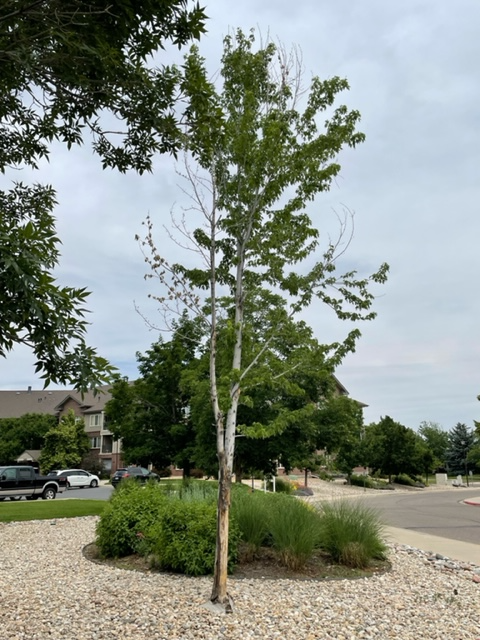Xeric Does Not Mean Zero
- 2022-07-08
- By mkirk
- Posted in Horticulture, The Garden Buzz
By Pam Rosendal, Colorado Master Gardener
The headlines are clear: Colorado’s climate is hotter and drier. With predictions of an even more arid climate and more severe droughts in coming decades, changing home landscapes to adapt to our evolving climate is a necessity.
Xeriscaping is one means of accomplishing that. Derived from the Greek xeros meaning dry, xeriscape means literally “dry landscape.” Receiving an average of approximately 15 inches of precipitation per year, the front range is definitely a dry landscape. By applying the principles of xeriscape, homeowners can make their landscape abundantly beautiful while more heat tolerant and less water dependent.

When converting the home landscape to xeriscape, homeowners should consider the needs of the existing landscape plants that will remain in the yard. This is most often trees and shrubs because of the impracticality or undesirability of removing them. No need to cut down the tree that shades your home from summer heat or the hedge that provides privacy. Yet many of the trees and shrubs commonly found in front range home landscapes will not thrive and may even perish in the reduced water circumstances of a xeriscape landscape.

Trees and shrubs not specifically recommended for a xeric landscape need supplemental watering to survive in a low-water landscape. The amount of water they need varies, depending on the age and size of the plant, time of year, soil type and watering method. Deciduous trees generally need around 10 gallons of water per inch of trunk diameter every one to two weeks. That means a tree with a trunk four inches in diameter needs about 40 gallons of water. For shrubs, poke a screwdriver into the ground in several places around the shrub. When it won’t easily penetrate more than three to four inches, it is time to water. Water can be delivered by lawn irrigation, drip irrigation, soaker hoses or bubblers running slowly and long enough that the water penetrates the root zone of the plant in one watering session. Following these suggestions will help your non-xeric plants survive and even thrive in a low-water landscape.
Interested in learning more? Check out our xeriscape resources along with helpful publications on tree and shrub care.
Horticulture Resources
- Garden Buzz Archives
- CSU Extension Resources
- Colorado Master Gardener Program
- Foothills to Plains Native Plant Master Program
- Native Bee Watch Community Science Program
- The Co-Hort Blog
- PlantTalk Colorado
- Soil Testing
- Plant Select
- Emerald Ash Borer
- Japanese Beetle
- Colorado State Forest Service
- Ask an Expert


